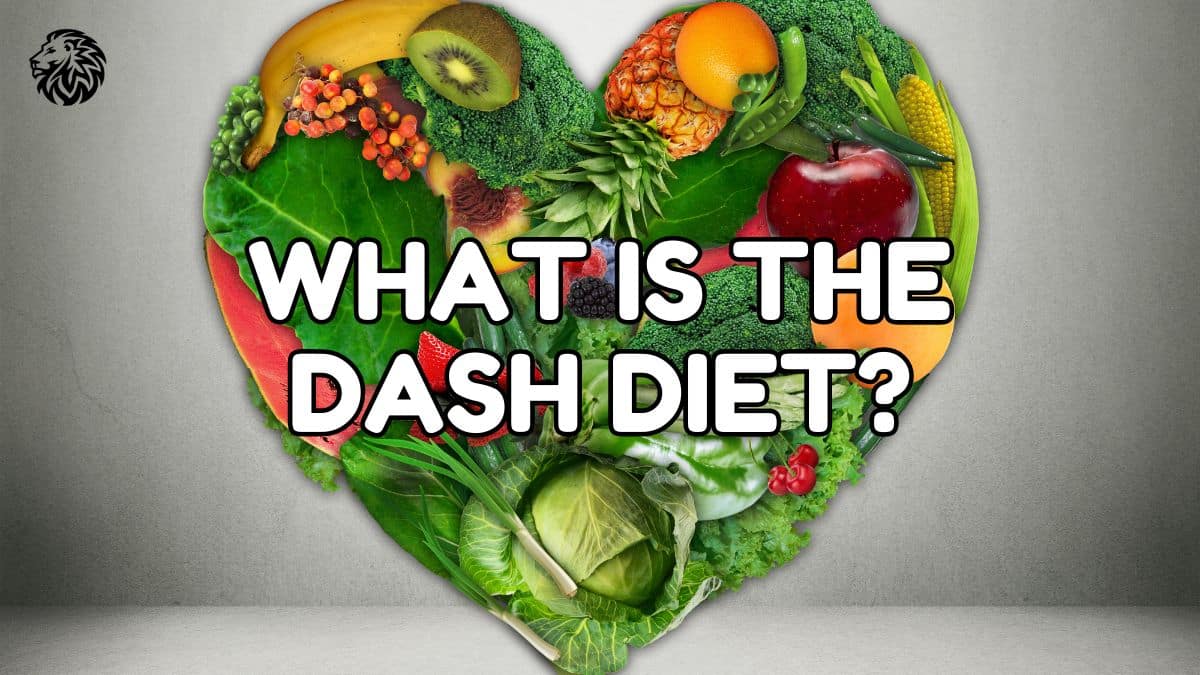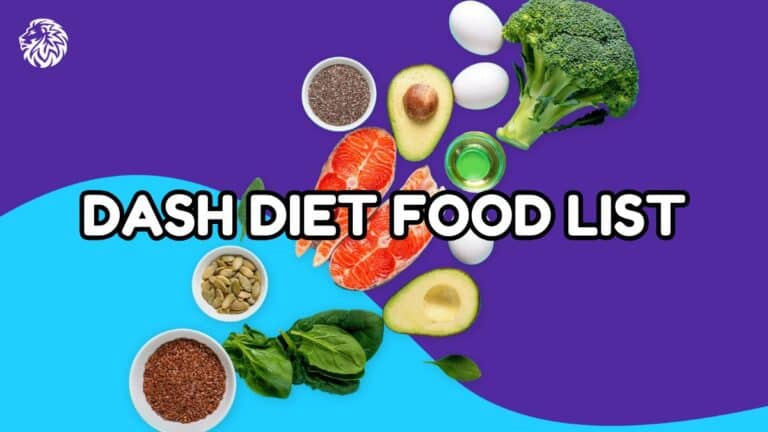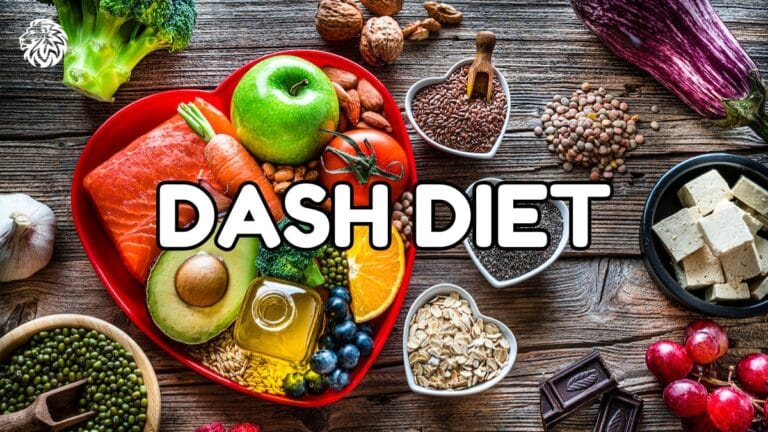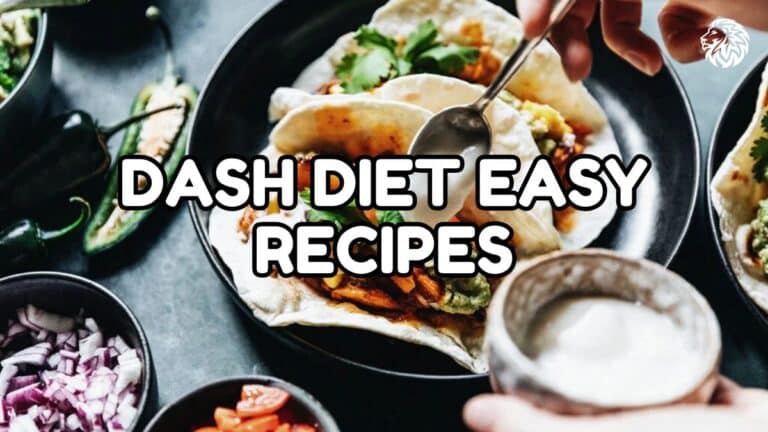The DASH diet, which stands for Dietary Approaches to Stop Hypertension, is a well-researched and highly recommended eating plan designed to help lower high blood pressure and promote better overall health. Initially developed to address the growing issue of hypertension, this diet emphasizes nutrient-rich, whole foods like fruits, vegetables, lean proteins, and whole grains, while limiting sodium, red meat, and processed foods. The DASH diet has gained significant popularity, not only for its proven ability to manage blood pressure but also for its effectiveness in preventing chronic conditions such as heart disease, stroke, and diabetes. By encouraging healthier eating habits, the DASH diet offers a sustainable path to long-term wellness.
What Is the DASH Diet?
The DASH diet, short for Dietary Approaches to Stop Hypertension, was created to help reduce high blood pressure, also known as hypertension. The main focus of the DASH diet is on incorporating heart-healthy, nutrient-dense foods that naturally help manage blood pressure.
At its core, the DASH diet emphasizes a high intake of fruits, vegetables, whole grains, lean proteins like poultry and fish, and low-fat or fat-free dairy products. These foods provide essential nutrients, such as potassium, calcium, magnesium, and fiber, which work together to lower blood pressure. Additionally, the diet encourages reducing the intake of sodium (salt), as well as limiting red meat, sugary foods and beverages, and processed foods. By focusing on wholesome, unprocessed foods and keeping salt and unhealthy fats in check, the DASH diet supports better cardiovascular health and overall well-being.
Health Benefits of the DASH Diet
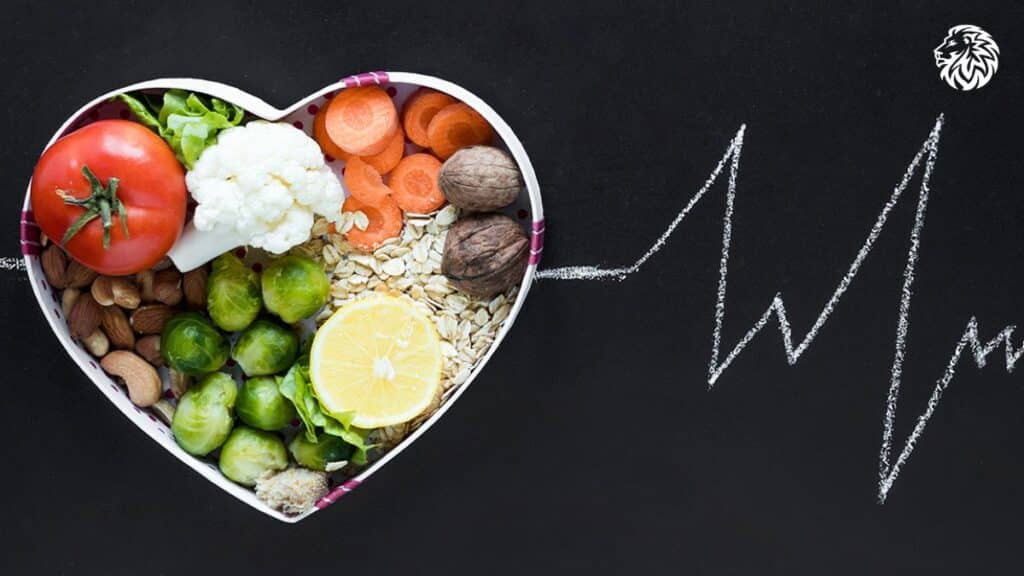
1. Lowering Blood Pressure
One of the most significant benefits of the DASH diet is its proven ability to reduce both systolic and diastolic blood pressure. Numerous studies have shown that individuals who follow the DASH eating plan experience noticeable drops in their blood pressure levels. This is especially beneficial for people with hypertension or those at risk of developing it. A key reason for this success is the diet’s focus on reducing sodium intake. Sodium plays a major role in raising blood pressure, and by limiting it, the DASH diet helps manage and even lower hypertension. The combination of potassium-rich foods, like fruits and vegetables, with low sodium intake further enhances this effect, making it an effective natural approach to blood pressure control.
2. Reducing Risk of Heart Disease and Stroke
In addition to lowering blood pressure, the DASH diet has been linked to a reduced risk of heart disease and stroke. Research has consistently shown that those who adopt this diet are less likely to develop cardiovascular issues. By emphasizing heart-healthy foods like whole grains, lean proteins, and healthy fats, and avoiding processed and fatty foods, the DASH diet helps protect against the build-up of cholesterol in the arteries, reducing the likelihood of heart attacks and strokes. The diet’s impact on lowering blood cholesterol and promoting better heart health is well-documented in studies.
3. Weight Loss
Another important benefit of the DASH diet is its potential for weight loss. While it is primarily designed to manage blood pressure, the balanced, nutritious nature of the diet often leads to natural weight reduction, especially for people with high blood pressure or metabolic syndrome. The emphasis on low-calorie, nutrient-dense foods like fruits, vegetables, and whole grains, combined with lean proteins and healthy fats, can help people lose excess weight and improve their overall metabolic health. This, in turn, further reduces the risk of complications associated with obesity, such as diabetes and cardiovascular disease.
4. Additional Benefits
Beyond blood pressure control and heart health, the DASH diet offers a wide range of other health benefits. Research has shown that it can lower the risk of type 2 diabetes, kidney disease, and even certain cancers, such as breast and colorectal cancers. This is largely attributed to the diet’s high intake of fiber, antioxidants, and anti-inflammatory nutrients found in plant-based foods. Additionally, the DASH diet is associated with improved mental health, including reduced symptoms of depression and anxiety, and better sleep quality. This comprehensive approach to eating supports both physical and mental well-being, making it an excellent choice for overall health.
What to Eat on the DASH Diet
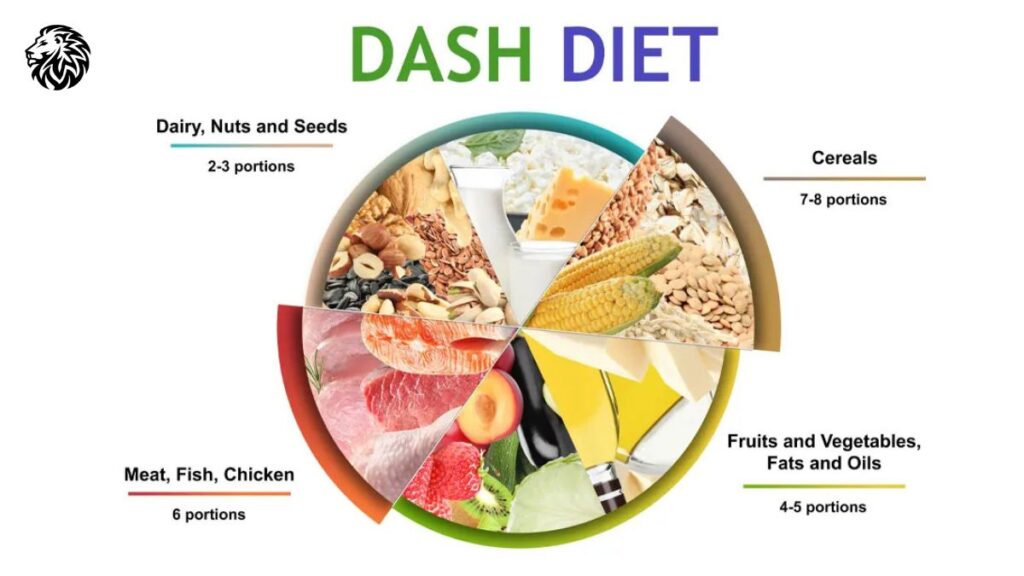
The DASH diet is flexible, making it easier to adopt and sustain in the long term. It focuses on nutrient-rich whole foods, offering a wide range of options to suit different tastes and preferences. The key is to choose foods that are low in sodium, saturated fats, and added sugars, while prioritizing those that are high in essential nutrients like potassium, calcium, magnesium, and fiber. Here’s a breakdown of the key food groups emphasized in the DASH diet:
1. Fruits and Vegetables
Fruits and vegetables are the foundation of the DASH diet, with the recommendation of 4-5 servings of each per day. These foods are rich in vitamins, minerals, and fiber, which help lower blood pressure and promote overall health.
- Examples of fruits: apples, pears, oranges, berries, and tropical fruits like mango and pineapple.
- Examples of vegetables: leafy greens (spinach, kale), tomatoes, carrots, broccoli, and sweet potatoes.
2. Whole Grains
Whole grains are an essential component of the DASH diet, providing a good source of fiber, which helps with digestion and heart health. You should aim for 6-8 servings of whole grains per day. Whole grains are a healthier alternative to refined grains because they retain more nutrients, including fiber, which can help lower cholesterol and blood pressure.
- Examples of whole grains: brown rice, whole-wheat bread, oatmeal, quinoa, and whole-wheat pasta.
3. Lean Proteins
Lean proteins, such as poultry, fish, beans, and legumes, are key to the DASH diet. These foods provide essential nutrients like protein and omega-3 fatty acids, without the unhealthy fats found in red and processed meats. The DASH diet recommends 6 or fewer servings per day of lean proteins. Red and processed meats are limited because of their high levels of saturated fat and sodium, which can increase blood pressure and cholesterol.
- Examples of lean proteins: skinless chicken, turkey, fish (such as salmon or tuna), beans, lentils, and peas.
4. Low-fat or Fat-free Dairy
Dairy is another important part of the DASH diet, but it should be low in fat to avoid excessive saturated fats. The diet encourages 2-3 servings of low-fat or fat-free dairy per day. Dairy products provide calcium, which is beneficial for maintaining healthy blood pressure.
- Examples of low-fat dairy: skim milk, low-fat yogurt, and low-fat cheese.
5. Healthy Fats
The DASH diet favors healthy, unsaturated fats, such as those found in olive oil, over saturated fats like those in butter or fatty meats. These healthy fats help lower cholesterol and support heart health. The recommendation is 2-3 servings of healthy fats per day.
- Examples of healthy fats: olive oil, canola oil, avocados, and nuts.
By focusing on these nutrient-dense, whole foods and limiting high-sodium, processed, and fatty foods, the DASH diet offers a balanced and flexible approach to healthier eating.
What to Limit or Avoid
While the DASH diet focuses on including healthy, whole foods, it also emphasizes the importance of limiting or avoiding certain foods that can negatively impact blood pressure and overall health. Here are the key categories to watch:
Sodium
A critical aspect of the DASH diet is reducing sodium intake. Sodium contributes to high blood pressure by causing the body to retain water, which increases the volume of blood in the arteries and adds pressure. The DASH diet recommends keeping sodium intake under 2,300 milligrams per day, which is about one teaspoon of table salt. For even greater benefits, particularly for those with hypertension, reducing sodium to 1,500 milligrams per day is ideal.
- Tips for lowering sodium: Avoid processed foods, read nutrition labels for sodium content, and season meals with herbs and spices instead of salt.
Red and Processed Meats
Red and processed meats are high in saturated fats and sodium, both of which are linked to increased risks of high blood pressure, heart disease, and stroke. The DASH diet advises minimizing or avoiding red meats (like beef and pork) and processed meats such as bacon, sausage, and deli meats. These meats contribute to higher cholesterol levels and can lead to weight gain and other health complications.
- Instead of red and processed meats, opt for lean proteins like fish, poultry, and plant-based proteins such as beans and lentils.
Sweets and Sugary Drinks
Sweets and sugary beverages like soda, candy, and baked goods provide little to no nutritional value and can contribute to weight gain, high blood sugar, and an increased risk of heart disease. The DASH diet encourages limiting the intake of these items to 5 or fewer servings per week.
- Examples to limit: soft drinks, candy, pastries, and sugary cereals.
- Alternatives: Swap sugary snacks with healthier options like fresh fruit or yogurt, and replace soda with water or herbal teas.
By keeping sodium, red meat, processed foods, and sugary treats to a minimum, the DASH diet supports a heart-healthy lifestyle and contributes to better blood pressure control and long-term well-being.
How Does the DASH Diet Compare to Other Diets?
DASH vs. Mediterranean Diet:
Both the DASH and Mediterranean diets are highly regarded for promoting heart health and reducing the risk of chronic diseases. They share several similarities, as both emphasize the importance of plant-based foods and lean proteins, making fruits, vegetables, whole grains, and healthy fats central to their approach. However, there are some key differences between the two:
- Olive Oil Usage:
- Mediterranean Diet: Olive oil is a cornerstone of the Mediterranean diet, often used as the primary source of fat. It is celebrated for its heart-healthy monounsaturated fats, which can help lower bad cholesterol and reduce the risk of heart disease.
- DASH Diet: While the DASH diet also includes olive oil and other healthy fats like canola oil, it does not rely on olive oil as exclusively as the Mediterranean diet. The DASH diet encourages a balance of various unsaturated fats but emphasizes reducing total fat intake, especially saturated fats.
- Alcohol Intake:
- Mediterranean Diet: Moderate wine consumption, particularly red wine, is allowed and even encouraged as part of the Mediterranean diet. Studies suggest that moderate wine intake can have cardiovascular benefits due to its antioxidant properties.
- DASH Diet: The DASH diet does not specifically recommend or discourage alcohol, but it focuses on overall heart health through food choices. Those following the DASH diet may want to limit alcohol, especially if they have high blood pressure.
- Sodium Limitation:
- DASH Diet: A primary focus of the DASH diet is on limiting sodium intake to manage blood pressure. The diet emphasizes reducing salt consumption, making it especially beneficial for people with hypertension.
- Mediterranean Diet: While the Mediterranean diet promotes eating fresh, whole foods that are naturally low in sodium, it does not have specific guidelines for reducing salt to the same extent as the DASH diet.
In summary, while both diets are plant-forward and encourage lean proteins, the Mediterranean diet highlights the use of olive oil and allows moderate wine intake, whereas the DASH diet prioritizes limiting sodium and doesn’t specifically address alcohol. Both diets have been shown to significantly benefit heart health, but the DASH diet is particularly tailored for those needing to manage high blood pressure.
Tips for Success on the DASH Diet
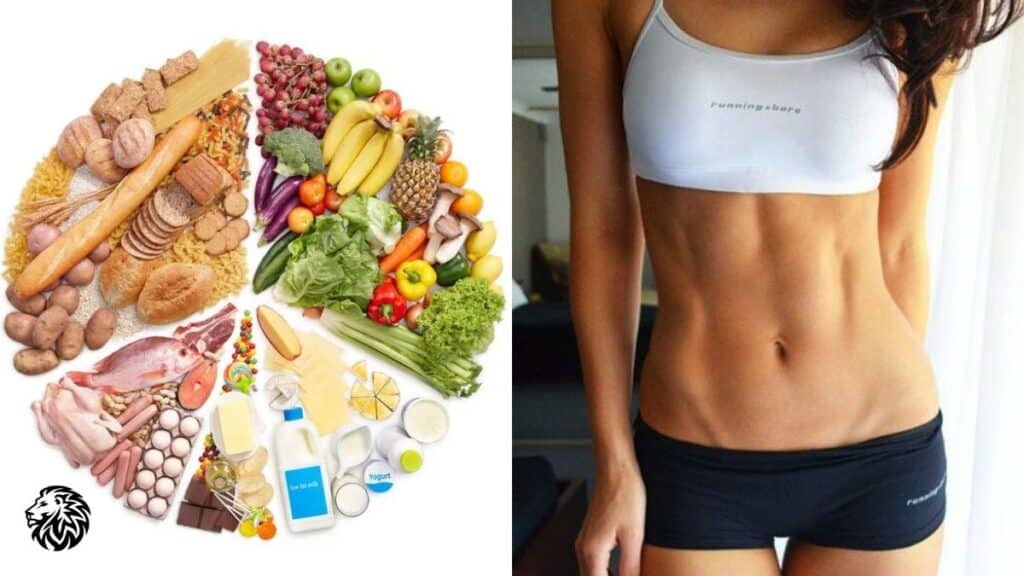
Starting the DASH diet can be a rewarding step toward better health, but like any dietary change, it requires some planning and adjustments. Here are a few practical tips to help you get started and stay on track with the DASH diet:
Meal Planning
Planning your meals ahead of time is a great way to ensure you’re eating a balanced and varied diet. It allows you to stick to the recommended servings of fruits, vegetables, whole grains, and lean proteins while limiting sodium, added sugars, and unhealthy fats. Consider creating a weekly meal plan that includes DASH-friendly recipes and snack ideas. This not only saves time but also helps you avoid the temptation of unhealthy, processed options.
- Tip: Make a grocery list based on your meal plan to help you buy the right ingredients and avoid impulse purchases.
Gradual Changes
Making significant changes to your diet all at once can be overwhelming. Instead, try introducing new foods and reducing sodium gradually. Start by cutting back on high-sodium foods like processed meats, canned soups, and salty snacks. At the same time, begin adding more whole grains, fruits, and vegetables to your meals. Over time, your taste buds will adjust, and you’ll find it easier to stick to the lower-sodium recommendations of the DASH diet.
- Tip: Gradually swap refined grains for whole grains, such as replacing white rice with brown rice or using whole-wheat pasta instead of regular pasta.
Snack Smart
Snacking is part of a healthy eating plan, but it’s important to choose snacks that align with the DASH diet. Instead of reaching for processed snacks like chips or cookies, opt for nutrient-rich options like fruits, vegetables, nuts, or low-fat yogurt. These snacks not only satisfy hunger but also provide essential vitamins, minerals, and fiber.
- Tip: Keep healthy snacks like apples, baby carrots, almonds, and low-fat string cheese on hand for when you need a quick energy boost.
By planning meals, making gradual changes, and choosing healthy snacks, you can smoothly transition to the DASH diet and maintain it over the long term, supporting both your heart health and overall wellness.
Conclusion
The DASH diet offers a powerful and practical approach to improving health, particularly for those looking to manage high blood pressure. With its focus on nutrient-rich whole foods like fruits, vegetables, whole grains, lean proteins, and low-fat dairy, the DASH diet not only helps lower blood pressure but also reduces the risk of heart disease, stroke, diabetes, and certain cancers. Additionally, its flexibility makes it easier to adopt and maintain over the long term, offering a balanced, sustainable way to improve overall well-being.
While the DASH diet is beneficial for many people, it’s important to consult with a healthcare provider or dietitian before making significant changes to your diet, especially if you have any pre-existing health conditions. A professional can help tailor the DASH diet to your specific needs, ensuring you get the most out of this heart-healthy eating plan.
Frequently Asked Questions (FAQs) about the DASH Diet
1. What is the main goal of the DASH diet?
The DASH diet is designed primarily to lower high blood pressure (hypertension) through a balanced eating plan. It also promotes heart health, reduces the risk of chronic diseases like diabetes and stroke, and supports overall well-being by encouraging the consumption of nutrient-dense whole foods.
2. How much sodium can I consume on the DASH diet?
The DASH diet recommends limiting sodium intake to 2,300 milligrams per day (about one teaspoon of salt). For individuals who want more significant benefits, particularly those with high blood pressure, it’s advised to reduce sodium to 1,500 milligrams per day.
3. Can I lose weight on the DASH diet?
Yes, the DASH diet can support weight loss, especially if you follow the recommended portions and focus on nutrient-dense, low-calorie foods. By reducing high-calorie, processed foods and including more fruits, vegetables, whole grains, and lean proteins, many people experience natural weight loss.
4. How does the DASH diet help lower blood pressure?
The DASH diet helps lower blood pressure by focusing on foods high in potassium, magnesium, calcium, and fiber—nutrients that play a role in regulating blood pressure. Additionally, the diet restricts sodium, which is a major contributor to high blood pressure.
5. Is the DASH diet difficult to follow?
The DASH diet is generally considered easy to follow because it doesn’t require drastic or restrictive measures. It encourages balanced, flexible eating that can be adapted to individual preferences. By gradually reducing sodium and incorporating more whole foods, it becomes easier to maintain in the long run.
6. Can I drink alcohol on the DASH diet?
The DASH diet doesn’t provide specific guidelines about alcohol, but it’s generally recommended to consume alcohol in moderation. If you do drink, limit it to no more than one drink per day for women and two drinks per day for men, as excessive alcohol intake can raise blood pressure.
7. How does the DASH diet compare to the Mediterranean diet?
Both diets emphasize plant-based foods, lean proteins, and healthy fats, making them beneficial for heart health. The key differences are that the Mediterranean diet allows moderate wine consumption and uses olive oil almost exclusively, while the DASH diet focuses on reducing sodium and doesn’t provide specific alcohol recommendations.
8. Are there any risks associated with the DASH diet?
For most people, the DASH diet is safe and highly beneficial. However, if you have certain medical conditions like kidney disease or food allergies, you may need to modify the diet. It’s always best to consult with a healthcare provider before starting the DASH diet, especially if you have any existing health concerns.
9. Can I still eat red meat on the DASH diet?
Yes, but red meat should be limited to occasional servings. The DASH diet recommends focusing on lean proteins like poultry, fish, and plant-based sources of protein (e.g., beans and legumes) and consuming red meats sparingly due to their higher saturated fat and sodium content.
10. How quickly will I see results from the DASH diet?
You may begin to see improvements in blood pressure within two weeks of starting the DASH diet. However, results vary depending on individual health conditions, adherence to the diet, and lifestyle factors like exercise. Consistent, long-term practice of the DASH principles yields the best results.
References
- MedlinePlus. (2022). DASH diet: Instructions for patients. https://medlineplus.gov/ency/patientinstructions/000784.htm
- Health US News. (n.d.). Best diets: DASH diet review. https://health.usnews.com/best-diet/dash-diet
- National Kidney Foundation. (n.d.). DASH diet for kidney health. https://www.kidney.org/kidney-topics/dash-diet
- Wikipedia. (2023). DASH diet. https://en.wikipedia.org/wiki/DASH_diet
- National Institutes of Health. (2018). DASH ranked best diet overall for eighth year in a row by U.S. News & World Report. https://www.nih.gov/news-events/news-releases/dash-ranked-best-diet-overall-eighth-year-row-us-news-world-report
- Siervo, M., Lara, J., Chowdhury, S., Ashor, A., Oggioni, C., & Mathers, J. C. (2015). Effects of the dietary approach to stop hypertension (DASH) diet on cardiovascular risk factors: A systematic review and meta-analysis. British Journal of Nutrition, 113(1), 1-15. https://www.cambridge.org/core/journals/british-journal-of-nutrition/article
- Appel, L. J., et al. (1994). A clinical trial of the effects of dietary patterns on blood pressure. The New England Journal of Medicine, 330(16), 1117-1124. https://www.sciencedirect.com/science/article
- National Heart, Lung, and Blood Institute. (n.d.). DASH eating plan: Potassium fact sheet. https://www.nhlbi.nih.gov/sites/default/files/publications/WES09-DASH-Potassium.pdf
- National Center for Biotechnology Information. (2018). Dietary approaches to stop hypertension (DASH). In Nutrition evidence library. https://www.ncbi.nlm.nih.gov/books/NBK482514/
- Lakkur, S., & Judd, S. E. (2017). Dietary patterns and coronary artery disease risk in the REGARDS study. Current Opinion in Cardiology, 32(4), 384-389. https://www.ncbi.nlm.nih.gov/pmc/articles/PMC5509411/
- National Heart, Lung, and Blood Institute. (n.d.). DASH research: Research on the DASH eating plan. National Institutes of Health. https://www.nhlbi.nih.gov/education/dash/research
- Joung, H., Kim, J., Kim, S., Kim, H., & Lee, J. (2023). The association between adherence to the DASH diet and obesity in adults: A systematic review and meta-analysis. Journal of Nutrition, 54(3), 432-445. https://www.ncbi.nlm.nih.gov/pmc/articles/PMC9953672/
- ScienceDirect. (n.d.). DASH diet. https://www.sciencedirect.com/topics/medicine-and-dentistry/dash-diet
- Harvard T.H. Chan School of Public Health. (n.d.). The DASH diet: A detailed overview. The Nutrition Source. https://nutritionsource.hsph.harvard.edu/healthy-weight/diet-reviews/dash-diet/
- Mayo Clinic Staff. (n.d.). DASH diet: Healthy eating to lower your blood pressure. Mayo Clinic. Retrieved October 11, 2024, from https://www.mayoclinic.org/healthy-lifestyle/nutrition-and-healthy-eating/in-depth/dash-diet/art-20047110
- Mayo Clinic Staff. (n.d.). DASH diet: Guide to recommended servings. Mayo Clinic. Retrieved October 11, 2024, from https://www.mayoclinic.org/healthy-lifestyle/nutrition-and-healthy-eating/in-depth/dash-diet/art-20050989
- Heart and Stroke Foundation of Canada. (n.d.). DASH diet: Healthy eating guide. https://www.heartandstroke.ca/healthy-living/healthy-eating/dash-diet
- MedlinePlus. (2022). DASH diet: Instructions for patients. https://medlineplus.gov/ency/patientinstructions/000784.htm
- National Heart, Lung, and Blood Institute. (n.d.). DASH research. U.S. Department of Health and Human Services. https://www.nhlbi.nih.gov/education/dash/research
- Mayo Clinic. (2022). DASH diet: Healthy eating to lower your blood pressure. https://www.mayoclinic.org/healthy-lifestyle/nutrition-and-healthy-eating/in-depth/dash-diet/art-20047110
- WebMD. (2023). The DASH diet for high blood pressure. https://www.webmd.com/hypertension-high-blood-pressure/dash-diet
- Health US News. (n.d.). Best diets: DASH diet review. https://health.usnews.com/best-diet/dash-diet
- Mitry, P., et al. (2022). DASH diet and cardiovascular disease prevention: A systematic review and meta-analysis. Frontiers in Nutrition, 9, 775543. https://www.frontiersin.org/journals/nutrition/articles/10.3389/fnut.2022.775543/full
- National Heart, Lung, and Blood Institute. (n.d.). Following the DASH diet. https://www.nhlbi.nih.gov/education/dash/following-dash
- National Heart, Lung, and Blood Institute. (n.d.). The DASH eating plan. https://www.nhlbi.nih.gov/education/dash-eating-plan
- Epstein, B. J., & Palmer, B. F. (2013). Hypertension and the DASH diet: Balancing the equation. Current Hypertension Reports, 15(5), 465-472. https://link.springer.com/article/10.1007/s13668-013-0070-2
- Blumenthal, J. A., et al. (2012). DASH diet and cardiovascular risk factors. Current Hypertension Reports, 14(6), 383-391. https://link.springer.com/article/10.1007/s11906-012-0296-1
- Mayo Clinic. (2023). DASH diet: Tips for lifelong health. https://www.mayoclinic.org/healthy-lifestyle/nutrition-and-healthy-eating/in-depth/dash-diet/art-20048456
- Mayo Clinic. (2022). DASH diet: Healthy eating to lower your blood pressure. https://www.mayoclinic.org/healthy-lifestyle/nutrition-and-healthy-eating/in-depth/dash-diet/
- WebMD. (2023). The DASH diet for high blood pressure. https://www.webmd.com/hypertension-high-blood-pressure/dash-diet
- Heart and Stroke Foundation of Canada. (n.d.). DASH diet: Healthy eating guide. https://www.heartandstroke.ca/healthy-living/healthy-eating/dash-diet
